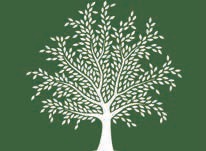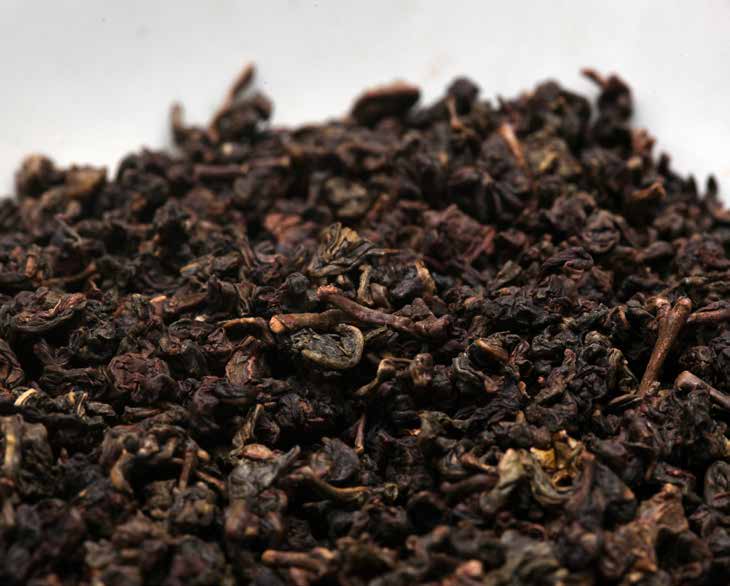
 |
|
We love that our tea center is based in Taiwan - a small island with an abundance of magnificent teas. Although Taiwan acts as a sort of caretaker for many of the old Puerh Teas of Yunnan, it is better known for the Oolong Teas it produces. One of Taiwan's most famous Oolongs is Dong Ding (or Tung Ting) Oolong, and this is the tea we're sending you this month.

Dong Ding's name comes from the same place as the original Dong Ding bushes - Wuyi Mountain in China - and it means Frozen Summit. As the name suggests, this tea knows how to handle a chill in the air, and it can help you do the same. (There is another local story for how it got its name, suggesting that the "Dong" refers to the flexing in the calf muscles required to get up the cliffs to the trees, as it sounds identical to that word in the local, Taiwanese dialect.) Traditional Dong Ding Oolongs are expertly roasted, lending them a warming Qi and flavor that's ideal for late autumn and early winter. Better yet, they love to be infused many times, so they're perfect for warming up for a few hours in the chill of early morning or just after the increasingly early sunsets of the season.
According to local folklore, the original Dong Ding tea bushes were brought to Taiwan around 1855. Legend has it that a government official named Lin Fong Tse traveled to Wuyi and came back with 36 ching-shin (meaning 'purified heart' or 'tender heart') varietal tea plants. He gave twelve of these trees as a gift to a friend in Nantou, who then planted the trees amongst the gorgeous views outside the Nantou town of Lugu. Some of those original plants are still around today, and although some of them have been overly taxed by cuttings for cloned bushes, there is still reverence for them in the area, and small offerings can sometimes be seen strewn around their roots.
In the many years since the arrival of these twelve plants in Nantou, much work has gone into perfecting the processing of this distinctive varietal of tea. Nantou County tea makers (especially those around Lugu) have mastered the art of charcoal roasting Oolong and garnered immense respect for their medium-oxidized, dark roasted Dong Ding Oolongs in the past. Unfortunately, the region temporarily lost its way when lighter oxidation, unroasted Oolongs came into fashion in the 1980s, and many traditional processes were cast aside in favor of the prospect of higher profits. In an attempt to capture the high profits of nearby San Lin Xi's high mountain Oolongs, the farmers of Lugu cast aside their traditional processes, and many lost the knowledge and skills behind traditional Oolong roasting entirely as a new generation of farmers took over. Perhaps even worse yet, the loss of traditional processes coincided with a switch to conventional farming. Realizing that they couldn't replicate the aroma of high mountain Oolong (which is, by the way, the only thing high mountain Oolong has going for it!), they began to pump their plants full of fertilizers in an attempt to increase their profit margins. Much of the land surrounding Lugu was scorched with harsh chemicals in the decade or so after this shift, and some of it remains fallow or seriously damaged today.

However, in recent years awareness of more sustainable farming methods has become not just a practice but a necessity, and the older styles of Oolong production have just begun to be revitalized by several tea masters who champion this classic style of tea. By now, most farmers in the Lugu area have recognized that overuse of chemicals is extremely short-sighted, and while purely organic production is still rare, 'chemical load reduction' has become the new buzzword, and an awareness of increasingly sustainable farming practices is ever-growing as farmers see the direct relationships between healthy earth and healthy plants, between their tea's desires and their own desires, and between the planet's well being and their own well being. And although traditional processing still isn't nearly so known or practiced as it once was, there is a growing support for it amongst the tea community within Nantou and amongst tea lovers around the world.
Traditional Dong Ding Oolongs are processed in a specific way requiring great skill. They are typically oxidized around thirty percent and rolled into a semi-ball shape during a process of tsai-rou, tsai-pei and ding-shing. Tsai-rou is a process of repeated rolling or kneading, requiring strength and endurance. It's often left to strapping young men who work as bamboo harvesters during the off-season. Tsai-pei is repeated firing and ding-shing is shaping. Both are processes handled by an experienced tea master who can evaluate the tea's oxidation levels by appearance and aroma at each step of the way.
After the tea has been processed, it is given a final 'finishing roast.' The lengthy firing process is traditionally done in a charcoal fire pit fueled with charcoal from a local wood, such as longyen (dragon eye) charcoal. During charcoal roasting, the tea is placed in a woven bamboo tray or basket and shaken over a stone pit. In the stone pit, embers gleam from beneath a thin layer of ash. The embers must be continually adjusted and readjusted to get the right temperature and to keep smoke to a minimum throughout the roasting. And although roasting is a very physically demanding process, the tea is often roasted for as long as eight or ten hours straight by a single tea master. Using this process to produce a full-bodied, well-rounded, complex and patient tea such as ours this month requires immense skill and many years of practice. Indeed, a skillful or unskillful finishing roast can make or break an Oolong such as a traditional Dong Ding. In Nantou, the transition to organic farming and traditional Dong Ding production is still fragile, and it needs proponents of real tea around the world to bolster it. Our Tea of the Month is not only organic, it is processed completely by hand and charcoal roasted. Supporting and sharing teas like this organic, traditional Dong Ding is exactly what we love about selecting a Tea of the Month for Global Tea Hut. We hope that you'll also appreciate that the old way is the best way in the case of this sustainable, traditional tea, and that you'll share it with friends to spread the love of this time-honored tea even further around the world!
We recommend brewing this tea gong fu and staying present with it over many infusions. Notice the way that as its aromas, flavors and Qi change as the tightly rolled leaves unfurl and expand in your pot. Feel the roastiness, warmth and strength of early infusions shift into mineral notes and a softer feeling in later steeps. And listen to what the leaves want to tell you of their tale...
As we mentioned in previous months, we recommend letting the tea get over its jet lag. Let it sit a week or two and become acclimatized.
